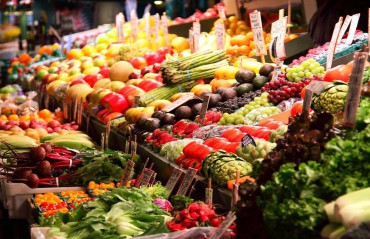 Chances are you’ve already heard about the benefits of including certified USDA organic foods in your diet. However, you may have also heard that such choices are typically higher in cost.
Chances are you’ve already heard about the benefits of including certified USDA organic foods in your diet. However, you may have also heard that such choices are typically higher in cost.
“Eating right is in easier reach of Americans than ever before,” says Kate Geagan, America’s green nutritionist and expert consultant for Earth’s Best, the first organic baby food brand, in business for nearly 30 years. “Organic options are becoming more affordable and accessible thanks to many big retailers.”
Looking to go organic? Geagan offers simple cost-cutting shopping strategies:
- Prioritize where you’ll get the biggest bang for your buck. One of the most important places to start is with animal products, as certified organic meat, poultry and dairy products do not contain added synthetic growth hormones and antibiotics. An added benefit — organic products prohibit the use of genetically modified organisms. The 2010 Dietary Guidelines for Americans includes 5 to 7 ounces of lean protein daily for adults and 2 ounces daily for children. Make purchases less wasteful and more cost-effective by keeping these recommended portions in mind.
- Avoid Environmental Working Group’s “Dirty Dozen,” the 12 conventional fruits and vegetables that typically contain the highest levels of pesticide residues. Many of these foods, which include apples and potatoes, are family staples. Purchase these items organic if possible and thoroughly wash produce and remove the peel to reduce pesticide residue.
- The farmers market is one of the most affordable resources for in-season, local food. Also, purchase raw organic produce during its peak season, when supply is up and cost is down. Buy in bulk and freeze excess batches to extend shelf-life without significantly impacting nutritional value.
- Follow your favorite organic brands on social media to maximize deals and scout for bargains. Many organic brands run promotions, coupons and special offers that can help you buy more and spend less. Depending on the item, you can stock up during a sale and freeze for later.
- One area where the benefit of organic is well proven is for infants and children. That’s because these are windows for rapid growth and development. Make smart purchases. A 4-ounce jar of organic baby food can often be cheaper than a 4-ounce pouch, and has a longer shelf life. For example, Earth’s Best offers organic jars for babies 4 to 6 months old, starting at 99 cents. Once opened, keep baby food jars and pouches refrigerated. Jars should be used within three days and pouches within 24 hours.
- In the past few years, organics have truly moved mainstream: 80 percent of households now purchase organic items at least some of the time, according to recent surveys from the Organic Trade Association. Many big box retailers, such as Walmart, Target and Kroger, now carry USDA organic products at low prices for babies, toddlers and older children, including baby food jars, pouches and frozen products.
With simple strategies, you can feed your family organic and stay within budget.
More nutrition tips and organic products can be found at EarthsBest.com.









